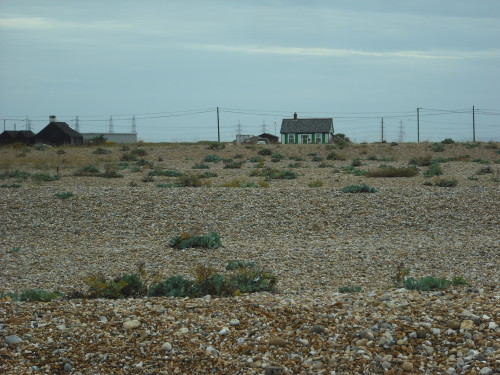Gimme Space!
The magic of saying just enough

When I was a child, time came with space. It was called Sunday and nothing much happened.
When I lived in London and I needed some space, I’d go to a place called Dungeness. Other-worldly, this shingle headland on the Kent coast was the perfect place to just ‘be:’
“It is not a picturesque landscape, it is an atmosphere, a large flat area illuminated like no other place in England, where the sea is supreme.”
(Brian Yale, artist 1936 – 2009)
The times they may be a-changing, but carving ourselves that atmosphere, that feeling of space is still something we all need.
And far from being nothingness, space – along with its cousins ‘pause’ and ‘silence’ – gives meaning and context to all the noise, stuff and clutter around us.
In praise of space
The white space on this page makes it easier for you to read my words.
Knowing when to stop talking in a business pitch makes it more likely you’ll get that sale.
Negative space – the space that surrounds an object or image – helps define and balance the boundaries of that object, and is a key element of artistic composition.
What you leave out is as important as what you put in.
“The perfect song is framed with silence”
(from “Beyond” by Daft Punk)
The composer Debbie Wiseman (“Wilde,” “Wolf Hall”) put it so well when she spoke about composing TV themes. As a young composer you want to show what you can do, put in everything you’ve assimilated in your training.
But in time you learn that less is more and you discover that simplicity is a whole lot more powerful.
Copywriter as sculptor
Copyblogger’s chief content writer Demian Farnworth talks about “sculpting” written content – breaking up blocks of text, inserting bullet points and sub-headings. All the things that go into making words delightfully digestible.
Effective copywriting is not about getting every last word in to drive your message home. And it’s about more than how the words look on the page (digital and physical) and how they sound (style, tone and pace).
It’s also about what’s left unsaid.
And what you feel able to leave out comes down to trust. Trusting yourself and trusting your reader/listener/audience.
Trust yourself
Trusting yourself, in that you have the knowledge and experience of your subject matter and audience, to not have to try so hard to bend them to your will.
Trust your audience
Trusting your readers, listeners, customers and prospects to fill in the gaps for themselves.
Having the confidence to leave them the space they need because you know that’s where the magic happens. That’s where they’re able to see themselves working with you and benefitting from what your business can offer them.
How to create that “magic” space
So say what’s necessary and then just enough to ignite their imagination. The word ‘imagination’ comes, after all, from the Old French and Latin – “to picture oneself.”
Weave in what we’ve all been doing since time began. Illustrate what you’re saying with stories and anecdotes making your messages more resonant and relatable.
Help them see themselves in your stories and make them – your readers/listeners/audience – the heroes of your stories.
Speak like a child
Visualise the space you give your audience as one of the pictures you drew as a child. You know, the ones where there was a broad band of sky, a gap and then the actual picture (the houses, the boats, the people); a bit like Dungeness:

